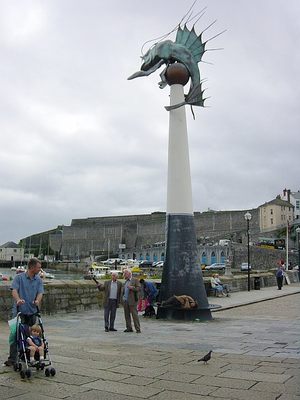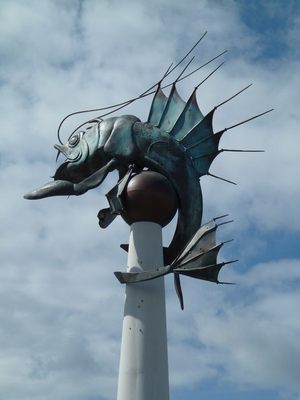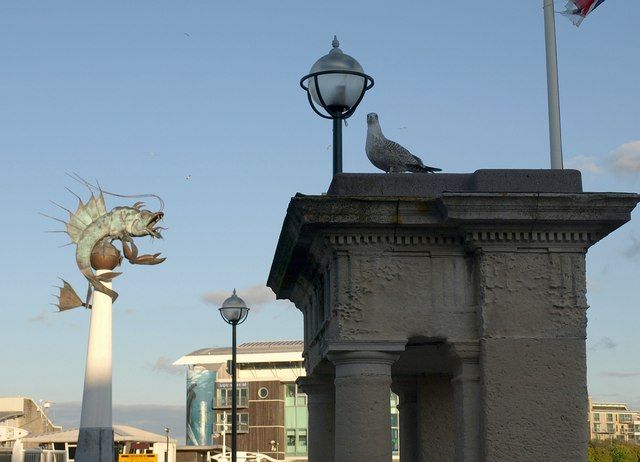About
Plymouth has been an important port throughout its history. The city was key in England's fight against the Spanish Armada, as the invasion was first spotted by Sir Fancis Drake from Plymouth Hoe. It was also an asset to Britain in the Napoleonic Wars, Napoleon being held in Plymouth Sound for 10 days after his capture. Plymouth is defined by its proximity to the sea, and in recognition of the seas important role in their history, Plymouth houses a sea monster.
Also known as the Barbican Prawn, this metal sculpture is in fact an amalgamation of local marine life from the past and present. Its head is that of an angler fish attached to an upper body consisting of a lobster’s carapace (shell) with accompanying claws and the lower body and towering fin of a John Dory. The creature stands with cormorant feet upon a pole, which its plesiosaurus tail curls around.
The pole is adorned with multiple plaques engraved with information concerning the marine wildlife and history of Plymouth, from the fossil record of the cormorant to the expeditions of Captain James Cook.The name "Leviathan" associates this chimera with the sea monster referenced throughout the Bible's Old Testament. Quite unlike its monstrous namesake, Plymouth’s Leviathan is popular amongst both locals and tourists. Having been a feature of Plymouth's Barbican for 20 years, the Leviathan is considered an iconic landmark alongside its neighbor, the Mayflower Steps, where the Pilgrim Fathers boarded the Mayflower before departing for North America and landing in what is now eponymously known as Plymouth Rock.
Related Tags
Know Before You Go
Parking is available at Lambhay Hill or Elphinstone car parks.
The sculpture can easily be seen from the street above, with a closeup view at any time next to the many memorials to the Mayflower and other ships that set off around the globe from the nearby jetty.
Published
May 15, 2020
Sources
- https://plymhearts.org/arts-and-culture/public-art/public-art-permanent/waterfront-walkway-various-artists/leviathan/
- https://en.wikipedia.org/wiki/Mayflower_Steps
- https://www.plymouth.gov.uk/sites/default/files/WaterfrontWalkway.pdf
- https://www.plymouthherald.co.uk/news/history/what-plymouths-barbican-prawn-there-2421955








































